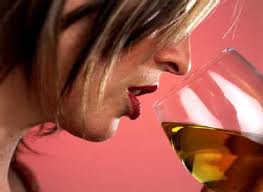Alcohol is one of the demons that man has known since fermentation was discovered. This is a beverage that makes people feel good because of that certain high that they get once a significant level is reached. Some people can handle their alcohol and some of them don’t. When people resort to alcohol as a means to escape their problems or reality per se, most of the time, they will do anything just to acquire as much of it as they could. When this happens, a bond between the alcohol and the person is firmly established already. At this stage, addiction is already established.
It is no surprise that alcohol addiction is now prevalent in the world. It is one of the most affordable escapes that the common man has. In this addiction, so many lives are affected. Family and friends of the addict are usually emotionally scarred and traumatized by the effects of alcohol on their loved one. With this, they try their best to provide help for the alcohol addict. In the quest to regain their loved one, rehabilitation centers and support groups are founded. But these are not enough. Once the alcohol addict is has withdrawn from alcohol, there should be a proper diet plan established. Here are some facts about alcohol addiction recovery diet that you should take into consideration:
1. Alcohol addicts are malnourished
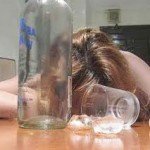 You must put in mind that alcohol addicts are very malnourished people. They consume alcohol most of the day everyday so as a result, they deprive their bodies of the valuable vitamins and minerals that they need to have a healthy body. The alcohol addiction recovery diet will be able to help the patient regain the nutrients lost in addiction. This may take time especially during the start of the alcohol addiction recovery diet, but with patience and constant supervision and support, the patient will reap the health rewards.
You must put in mind that alcohol addicts are very malnourished people. They consume alcohol most of the day everyday so as a result, they deprive their bodies of the valuable vitamins and minerals that they need to have a healthy body. The alcohol addiction recovery diet will be able to help the patient regain the nutrients lost in addiction. This may take time especially during the start of the alcohol addiction recovery diet, but with patience and constant supervision and support, the patient will reap the health rewards.
2. Cravings for alcohol occur
 During the onset of the alcohol addiction recovery diet, the patient may still have cravings for alcohol. Certain foods should be screened to prevent the patient from returning to the old bad habit. The food choices should sustain the patient long enough throughout the day so that they may not go for quick-fix food items like alcohol.
During the onset of the alcohol addiction recovery diet, the patient may still have cravings for alcohol. Certain foods should be screened to prevent the patient from returning to the old bad habit. The food choices should sustain the patient long enough throughout the day so that they may not go for quick-fix food items like alcohol.
3. More fiber-rich foods
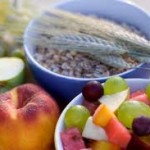 The alcohol addiction recovery diet offers a set of food choices that are way much healthier than getting those empty calories from alcohol or junk food. Fiber in grain, fruits, and vegetables are needed to give the patient enough energy during the day. These take long to digest so the patient is less probable to have unnecessary cravings.
The alcohol addiction recovery diet offers a set of food choices that are way much healthier than getting those empty calories from alcohol or junk food. Fiber in grain, fruits, and vegetables are needed to give the patient enough energy during the day. These take long to digest so the patient is less probable to have unnecessary cravings.
4. No sugar and caffeine
 When you decide to use the alcohol addiction recovery diet, then sugar and caffeine are eliminated from your choices. Sugar and caffeine affect the patient’s mood swings so if this is included in the diet, the recovery might take very long.
When you decide to use the alcohol addiction recovery diet, then sugar and caffeine are eliminated from your choices. Sugar and caffeine affect the patient’s mood swings so if this is included in the diet, the recovery might take very long.
5. Calories should be considered
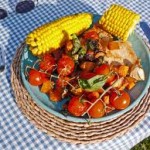 In subjecting the patient to alcohol addiction recovery diet, there should only be a total of 2,000 calories in the diet formulation. Proteins should be 25%, fats should be 30%, and carbohydrates should be 45%. There should also be a total of three snacks and three meals in one day. Mini-meals are recommended throughout the day to stabilize moods and appetite.
In subjecting the patient to alcohol addiction recovery diet, there should only be a total of 2,000 calories in the diet formulation. Proteins should be 25%, fats should be 30%, and carbohydrates should be 45%. There should also be a total of three snacks and three meals in one day. Mini-meals are recommended throughout the day to stabilize moods and appetite.
6. Hormones
 In the alcohol addiction recovery diet, the hormones Tryptophan and Tyrosine are provided. Tryptophan is responsible for relaxation and sleep. This can be found in turkey meat, sunflower seeds, milk, and bananas. Tyrosine is responsible for alertness and mental acuity. This can be obtained from tofu, seafood, poultry, and meat products. These food items are rich in protein.
In the alcohol addiction recovery diet, the hormones Tryptophan and Tyrosine are provided. Tryptophan is responsible for relaxation and sleep. This can be found in turkey meat, sunflower seeds, milk, and bananas. Tyrosine is responsible for alertness and mental acuity. This can be obtained from tofu, seafood, poultry, and meat products. These food items are rich in protein.
7. Take note of sample diets
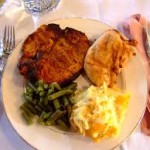 If you want to follow alcohol addiction recovery diet, then you should make an effort to follow some sample diets. You could effectively pattern each meal or snack from the recommended set of food choices so that each meal won’t be boring for the patient. For breakfast, you could serve yogurt, quiche, omelet, oatmeal muffins, or pancakes. For lunch, soups, salads, or sandwiches are good. For dinner, vegetable lasagna, tortillas, chicken with vegetables, chowder, beans with rice, or soups are hearty picks. For dessert, you could serve up custard, oatmeal cookies, yogurt, or fruit. When you go to the grocery, consider buying 100 percent fruit juices, dried fruit, cottage cheese, fresh fruits, low-fat yogurt, low-fat puddings, air-popped popcorn, raw vegetables, low-fat dressings, salsa, crackers, or canned fruit in their own juice.
If you want to follow alcohol addiction recovery diet, then you should make an effort to follow some sample diets. You could effectively pattern each meal or snack from the recommended set of food choices so that each meal won’t be boring for the patient. For breakfast, you could serve yogurt, quiche, omelet, oatmeal muffins, or pancakes. For lunch, soups, salads, or sandwiches are good. For dinner, vegetable lasagna, tortillas, chicken with vegetables, chowder, beans with rice, or soups are hearty picks. For dessert, you could serve up custard, oatmeal cookies, yogurt, or fruit. When you go to the grocery, consider buying 100 percent fruit juices, dried fruit, cottage cheese, fresh fruits, low-fat yogurt, low-fat puddings, air-popped popcorn, raw vegetables, low-fat dressings, salsa, crackers, or canned fruit in their own juice.
Before using the alcohol addiction recovery diet, you should consult the patient’s doctor and dietician so that you may know what precautions, guidelines, and additional supplements that you may need to improve the patient’s health and completely recover.
